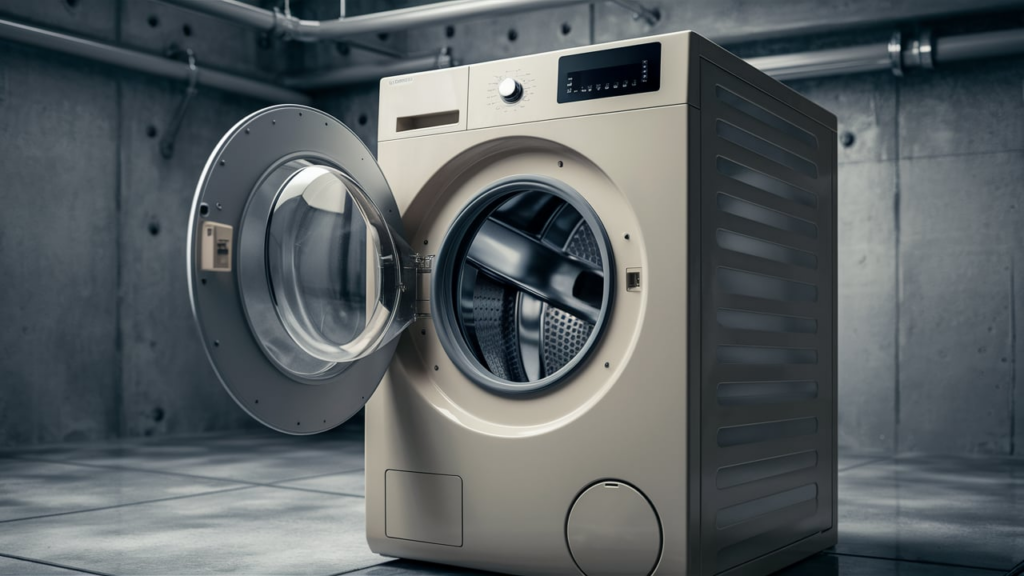
If your Samsung washer isn’t filling properly or is leaking, the water valve may be the problem. Learning to test and replace this component can save you time and the cost of hiring a technician. This guide provides clear steps to identify and resolve issues with the water valve.
The Role of the Water Valve in Your Washer
The water inlet valve regulates the flow of hot and cold water into the machine during wash cycles. If this component fails, you might experience problems such as slow filling, no filling, or leaks. Understanding its role will help you diagnose and fix the issue effectively.
Signs of a Faulty Water Valve
Look for these common symptoms to identify if the water valve might be malfunctioning:
- Washer doesn’t fill with water: The valve may not be opening properly.
- Slow filling: Restricted flow or partial blockage in the valve.
- Leaks: Water drips into the washer even when it’s not in use.
- Overfilling: The valve fails to shut off completely.
Causes of Water Valve Failure
Understanding why water valves fail can help prevent future issues. Common causes include:
- Mineral Buildup: Hard water can leave deposits that clog or restrict the valve.
- Wear and Tear: Over time, the valve’s internal components may degrade, leading to malfunction.
- Electrical Issues: A short circuit or damaged wiring can disrupt the valve’s ability to open and close properly.
- Debris Blockage: Foreign particles from the water supply may obstruct the valve, impeding its functionality.
Preparing to Test and Replace the Valve
Before you start, prioritize safety and gather the necessary tools.
Safety Precautions:
- Unplug the washer from the electrical outlet to prevent electrical hazards.
- Turn off the water supply to the washer.
- Wear gloves to protect your hands during the process.
- Handle all electrical components carefully, and only conduct live voltage tests if you are experienced and confident in doing so safely.
Tools Needed:
- Multimeter: For testing electrical resistance.
- Screwdrivers: Both Phillips and flat-head.
- Pliers: To disconnect and reconnect hoses.
- Replacement Water Valve: Ensure it’s compatible with your washer model.
How to Test and Replace a Washing Machine Water Valve
Inspect External Factors
- Verify that the water supply to the washer is turned on.
- Check the hoses for kinks or blockages.
- Inspect the inlet screens on the water valve for debris or sediment buildup.
Access the Water Valve
- Move the washer away from the wall to access the back panel.
- Remove screws securing the top or back panel, depending on your washer model.
- Remove the panel to expose the water valve assembly.
Inspect the Valve Mechanically
- Inspect the valve body for visible signs of damage, cracks, or leaks.
- Ensure the inlet screens on the valve are not clogged.
Test the Water Valve Solenoids for Resistance
- Unplug the washer to prevent electric shock.
- Set a multimeter to the resistance setting (ohms) with a range up to at least 2000 ohms.
- Disconnect the wires from the solenoid terminals on the valve, noting their placement.
- Place one probe of the multimeter on each solenoid terminal.
- Compare the resistance reading to your washer’s specifications (typically 500–1500 ohms for Samsung washers).
- Identify any solenoids with resistance values outside the acceptable range or showing zero (0 Ω) or “OL” (Open Loop).
Remove the Faulty Water Valve
- Label or photograph the wire connections on the faulty valve for reference.
- Disconnect the wires from the solenoids on the water valve.
- Use pliers to loosen and slide hose clamps off the hoses connected to the valve.
- Detach the hoses, using a towel to catch residual water.
- Remove the mounting screws holding the valve in place.
- Extract the water valve from the washer.
Install the New Water Valve
- Position the new water valve in place and secure it with mounting screws.
- Reconnect the hoses to the appropriate ports on the valve.
- Slide the hose clamps back into position to secure the hoses.
- Reconnect the wires to the solenoid terminals, referring to your labels or photo.
Reassemble and Test the Washer
- Reattach the back or top panel and secure it with screws.
- Move the washer back into position.
- Turn the water supply valves back on.
- Plug the washer into the electrical outlet.
- Run a test cycle to ensure the washer fills properly, operates correctly, and does not leak.
Also Read: How to replace water inlet valve W11220230 on a Whirlpool / KitchenAid / Maytag washer
Taking care of a faulty water valve in your Samsung washer doesn’t have to be complicated. With the clear steps outlined in this guide, you can confidently troubleshoot and fix the issue without calling a technician. Not only will your washer be up and running again, but you’ll also gain valuable DIY repair skills along the way.
